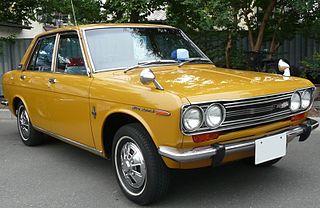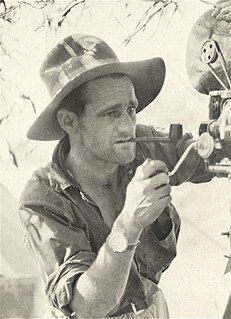Related Research Articles

Sir Charles Edward Kingsford Smith, MC, AFC, often called by his nickname Smithy, was an early Australian aviator.

The Datsun 510 was a series of the Datsun Bluebird sold from 1968 to 1973, and offered outside the U.S. and Canada as the Datsun 1600.

The Ford Köln is an automobile that was produced by Ford Germany from 1933 until 1936 at its Cologne plant.

The Triumph Herald is a small two-door car introduced by Standard-Triumph of Coventry in 1959 and made through to 1971. The body design was by the Italian stylist Giovanni Michelotti, and the car was offered in saloon, convertible, coupé, estate and van models, with the latter marketed as the Triumph Courier.

The Nissan Pulsar is a subcompact and compact car produced by the Japanese automaker Nissan from 1978 until 2000, when it was replaced by the Nissan Bluebird Sylphy in the Japanese market. Between 2000 and 2005, the name "Pulsar" has been used in Australia and New Zealand on rebadged versions of the Sylphy. This arrangement continued until the introduction of the Nissan Tiida (C11) in 2005; at this time the Pulsar name was retired. In 2013, Nissan replaced the Tiida in Australia and New Zealand with two new models badged as Pulsar. These were based on the Nissan Sylphy (B17) sedan and Nissan Tiida (C12) hatchback, the latter also sold in Thailand under the Pulsar name. In 2014, a European-only replacement for the Tiida was introduced using the Pulsar nameplate.

The Mitsubishi Mirage is a range of cars produced by the Japanese manufacturer Mitsubishi from 1978 to 2003 and again since 2012. The hatchback models produced between 1978 and 2003 were classified as subcompact cars, while the sedan and station wagon models, marketed prominently as the Mitsubishi Lancer, were the compact offerings. The liftback introduced in 1988 complemented the sedan as an additional compact offering, and the coupé of 1991 fitted in with the subcompact range. The current Mirage model is a subcompact hatchback and sedan and it replaces the Mitsubishi Colt sold between 2002 and 2012.

The BMW New Class was a line of sedans and coupes produced by German automaker BMW between 1962 and 1977. These models ensured BMW's solvency after the company's financial crisis of the 1950s and established the identity of BMW automobiles as sports sedans.

Smithy is a 1946 Australian adventure film about pioneering Australian aviator Sir Charles Kingsford Smith and his 1928 flight across the Pacific Ocean, from San Francisco, California, United States to Brisbane, Queensland, Australia. This was the first-ever transpacific flight. Kingsford Smith was the pilot of the Fokker F.VII/3m three-engine monoplane "Southern Cross", with Australian aviator Charles Ulm as the relief pilot. The other two crew members were Americans James Warner and Harry Lyon.

Southern Cross is the name of the Fokker F.VIIb/3m trimotor monoplane that in 1928 was flown by Australian aviator Charles Kingsford Smith, Charles Ulm, Harry Lyon and James Warner in the first-ever trans-Pacific flight to Australia from the mainland United States, a distance of about 11,670 kilometres (7,250 mi).

The Lady Southern Cross was a Lockheed Altair monoplane owned by Australian pioneer aviator Sir Charles Kingsford Smith.

Sir Patrick Gordon Taylor,, commonly known as Bill Taylor, was an Australian aviator and author. He was born at Mosman, Sydney, and died in Honolulu.
The SA was Toyota's first new passenger car design after World War II. It was the first in a family of vehicles before the introduction of the Crown. A series of light trucks also shared the chassis and major components of these passenger cars.

The Vauxhall Wyvern is a medium-sized family car introduced by Vauxhall in 1948 as a successor to the Vauxhall 12. The name comes from the mythical beast the wyvern, and may be due to a misidentification of the heraldic griffin on the Vauxhall badge.

The Mercedes-Benz W15 is an automobile produced by Mercedes-Benz from 1931 to 1936. Regarded today as a mid-size family car, it was given the chassis designation W15, and sold as the Typ 170 in four-door "Limousine" (sedan/saloon) and Cabriolet forms.

The Old Bus is a 1934 Australian documentary film about Australian contributions to flying, focusing on aviator Sir Charles Kingsford Smith, and derived from his 1932 book of the same name. The film takes its title from his famous Fokker F.VII/3m monoplane aircraft, The Southern Cross, that Kingsford Smith nicknamed "The Old Bus".

The Škoda 1101 is a small family car that was produced by Czechoslovak automaker AZNP at their plants in Mladá Boleslav, Vrchlabí and Kvasiny. It was basically a modernized version of the Škoda Popular 1101, which was introduced in 1939. The main differences were a redesigned body and a new dashboard. Production of the Škoda 1101 began in 1946.

Anderson Park is an urban recreation park located in the Sydney suburb of Neutral Bay, New South Wales, Australia. The park is located on the shore of the bay in Sydney Harbour from which the suburb is named.
The Marks-Moir car evolved through several iterations between 1921 and 1935. It was initially a collaboration between Dr A.R. Marks and W. Moir who designed an unconventional, chassis-less car to be manufactured in Australia. The original design was built in England in 1922. It was a two-seater that featured a body made of laminated wood. The motor, supplied by Wolsely, was mounted longitudinally behind the front seats. Two chains took the drive to the solid rear axle and differential action occurred within the rear wheel hubs. This increased ground clearance and minimized power loss compared to more orthodox driveline configurations. It was exhibited at Australia House in London for some months before Marks and Moir bought the prototype and some components to Australia.

Ernest Gustav Brandon-Cremer was a New Zealand/Australian moviemaker, newsman, explorer and adventurer. He was a key figure in Australian aviation history, and was especially known for his documentation of Lasseter's Gold Reef as well as his photography of the Solar eclipse of 21 September 1922 at Wallal, Australia.
The Škoda 637 is a Czechoslovak mid-size car that was made by Škoda from 1932 to 1935.
References
- ↑ Page 68, Ten Journeys to Cameron’s Farm: An Australian Tragedy, By Cameron Hazlehurst, Publisher: ANU E Press, 2013, ISBN 1925021017, ISBN 9781925021011
- ↑ Fairfax Corporation (1933), Crowd at an airport gathered around Charles Kingsford Smith's specially designed new car, the Southern Cross, New South Wales, 6 June 1933 , retrieved 23 March 2018
- ↑ "CAR WITHOUT A CHASSIS". Daily Examiner . 25, (7820). New South Wales, Australia. 15 August 1933. p. 6. Retrieved 23 March 2018– via National Library of Australia.CS1 maint: extra punctuation (link)
- ↑ "SOUTHERN CROSS CAR". The Advocate (Australia) . Tasmania, Australia. 6 June 1934. p. 9. Retrieved 23 March 2018– via National Library of Australia.
- ↑ "AUSTRALIAN-MADE CAR". The Sydney Morning Herald (29, 781). New South Wales, Australia. 15 June 1933. p. 6. Retrieved 23 March 2018– via National Library of Australia.
- ↑ "SOUTHERN CROSS CAR HAS REACHED PRODUCTION STAGE". Smith's Weekly . XVI, (22). New South Wales, Australia. 28 July 1934. p. 14. Retrieved 23 March 2018– via National Library of Australia.CS1 maint: extra punctuation (link)
| This article about a classic pre-war automobile produced between 1930 and 1945 is a stub. You can help Wikipedia by expanding it. |